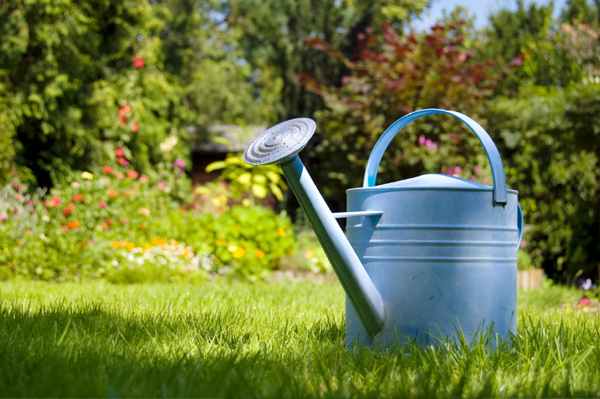A harsh winter can be harsh on your landscape, too. As those with heavy winters (and surprise snowstorms) quickly teach, one of the hardest parts of spring gardening and lawn care is preparing your land for new growth before the planting even begins. You cannot jump from an untended yard and brown grass to immediate transplants and sprinkler settings. In many ways, the yard needs to be eased back into spring after a harsh winter, or you risk dead grass and plants. Here are several tips to help you prepare as spring begins and your weekends involve outdoor hours.
1. Clean Up the Detritus:
Invest in a good rake, some buckets and a collection of garbage cans, and then start cleaning all around your house. Rake the flowerbeds clean of any needles, leaves, mosses and dirt that they may have collected over the winter. Then do the same for your grass, too. Many needles and some leaves include harsh, acidic chemicals that can act as poisons for more delicate plant life, so this is an important step for many lawns, especially after long months of winter storms.

2. Pay Attention to the Edges:
Where your paths and driveway meet your lawn and flowerbeds, a collection of dirt and debris tends to build up. Pay special attention to this border and clean it well. There are a couple reasons to do this. First, if you forget that little layer of dirt now, it will start growing a whole row of weeds in later months and the problem will get even worse. Second, over a harsh winter little things like de-icer or rock salt can get trapped in this layer and may leak into the soil and poison it unless you remove the border dirt quickly.
3. Catch Weeds Early:
As the spring months begin, one of the first signs of new life will probably be tough weeds and unwanted spots of grass popping up in your soil. Part of your preparation should be a full weeding that catches all these unwanted guests early. Remove these annoying plants before they develop deep root systems and start causing worse problems. Spring soil is likely to be muddy and full of dead plant life, so wear protective gear and get ready to fill your buckets a second time with prune branches and cast-away growth that died months ago.
4. Reseed:
After raking, you may find that some spots in your lawn are bare, where grass did not survive winter in the fashion you intended. The early spring months are an excellent time for reseeding, scattering extra grass seed in these patches to help them recover and prepare for the warmer months.
5. Aerate and Test Your Soil:
Some suggest you should fertilizer your lawn before you touch it with anything else, but it is actually better to mow at least once before fertilizing. While you are waiting for that first mow, you have an excellent opportunity to aerate your law and test your soil. Aeration, which can be done with a machine or through liquid soil aerators, helps clear away matted and deadened grass so that water and nutrients can reach down to the roots and help support the fresh, living grass. A pH test kit will also help you determine what kind of fertilizer you need to buy when the time is right – and can help you choose where to plant new bulbs and seeds based on the type of soil that plants prefer.
6. Start Composting:
Before you toss out all those dead branches, scraped-up leaves and pruned pieces, think about using them to start a composting project instead. Early spring is a great time to start a compost pile to use as an organic source of fertilizer.
Featured images:
- License: Royalty Free or iStock source: http://www.freedigitalphotos.net/
Mark Henson is a professional blogger that provides advice on the right protective clothing and gear to wear for working and outdoors situations. He writes for Muck Boots Outlet, a top distributor for muck boots, work boots and more.
































No Comments
Leave a comment Cancel